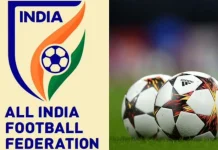The world of international football now faces its own moment of reckoning with FIFA’s 2029 Club World Cup expansion and potential shift to a biennial format. There are plans under discussion to shake-up the world of club competition and perhaps reshape the entire global club competition. However, as much as the relocation is a positive move, it is drawing issues of competitive integrity and the welfare of players as well as the sustainability of the crowded football calendar.
Expansion ambitions and strategic reasoning
The increased 2029 edition will include 48 teams representing each of the six confederations of FIFA. It features group stages and knockout rounds and it seeks to replicate the structure of other tournaments such as the World Cup and promote the size of club football around the planet.
The logic by FIFA is simple: where the demand is expanding into Asian markets and emerging markets in Africa and the Americas there is an opportunity to exploit commercially and even develop the elite clubs. The organization is being thrust towards change through greater broadcast rights and revenues in sponsorship and increased activities internationally.
Enhancing global representation
To clubs not in Europe, the expansion will be a first opportunity to compete on the global scale. Local infrastructures, national leagues and youth academies can all receive a boost in exposure and investment.
The open qualification pathway – with a focus on performance between 2025 – 2028 – promotes consistent competition throughout the year. It is also in line with international demands of more equitable organisations of football, even then sceptics warn against mere tokenism when support systems continue to be unequal.
Commercial incentives and package potential
FIFA aspires to see a tournament with vast monetary potential as it has more games, larger coverage and a greater variety of markets. Such a bi-yearly format might serve as the guarantee of long-term involvement and stable commercial results.
This ambition however has to be tempered with the realities on the ground of the global footballing operation. The time frame of having such an extended tournament is being threatened as clubs, federations and broadcasters honestly look at making long term investments.
Scheduling pressure and performance costs
A standout concern is calendar congestion. Domestic leagues, continental tournaments, and national team fixtures already strain club and player capacity. Introducing a biennial Club World Cup could exacerbate fatigue risks, injury incidence, and scheduling conflicts.
European leagues, particularly the Premier League and Serie A, stand cautious. As pillars of global football infrastructure, they emphasize league integrity and continuity over expanding external tournaments.
Player welfare under sustained demand
Elite players today navigate a grueling schedule. Adding regular Club World Cup appearances could push them past physical and mental thresholds, undermining performance and putting careers at risk.
Preventing burnout will hinge on refined squad rotation, medical innovations, and potentially redefined off-seasons. Coordination among clubs, leagues, and FIFA becomes essential in preserving player welfare amid expansion.
Fan interest and competitive balance
Fans crave marquee matchups and global spectacle. Yet overexposure risks diminishing their significance. A biennial rhythm needs to avoid diluting excitement through predictability or repetitive contests.
Ensuring that emerging clubs remain competitive and motivated is equally vital. If disparity grows, global viewership may falter, undermining FIFA’s expansion objectives.
Strategic and political dimensions
Strategically, the expansion reinforces FIFA’s global leadership ambitions. It positions the organization at the center of football’s emerging multipolar future, where Asia, Africa, and the Americas command rising influence.
Political balance is delicate. European dominance in slots underscores uneven football geography, yet offers a chance to integrate football’s fastest-growing regions into the club hierarchy meaningfully.
Navigating football geopolitics
UEFA holds foundational power, but other confederations see the expansion as recognition. Seamless integration of diverse stakeholders—balanced decisions over hosting, qualification, and revenue distribution—will be key in avoiding inter-regional friction.
Singapore, Brazil, and joint continental bids reflect football’s global momentum, but hosting cycles must ensure infrastructure readiness and equitable legacy outcomes for host regions.
Institutional competition and reform
The Club World Cup reform plays into broader debates over FIFA’s role relative to regional bodies. Will reform complement Champions League visions, or compete for global primacy?
The emerging model underscores FIFA’s capacity to innovate. Yet it also highlights institutional tensions—where autonomy, revenue models, and calendar control must be negotiated carefully.
Voices from the community
Sports commentator Leo Aschi captures the complex response: he acknowledges the transformative potential of an expanded Club World Cup while urging stakeholders to heed logistical and sporting constraints.
According to the Guardian, FIFA is considering organising a Club World Cup… every two years. So, just when you think you’ve hit rock bottom, you end up digging a little deeper. pic.twitter.com/zQwbl7RtLj
— Léo Aschi (@_LeoAschi_) August 17, 2025
His perspective reflects widespread sentiment—optimism tinged with caution. Many fans and analysts see the envisioned tournament as a bold step, provided calendar integrity, player welfare, and competitive balance are preserved.
Toward a responsible expansion
FIFA’s ambition to globalize its premier club tournament marks a defining moment in modern football governance. The success of the 2029 Club World Cup will require maneuvering: through the aspirations of the disadvantaged regions, through established leagues with a long tradition and through physical laws of cricketing boundaries.
It is an achievable plan, however, one that will take intense cross-stakeholder coordination, strategic pacing, and commitment to sustainable growth. The future of the biennial format as a historical leap or innovative overdose will depend on the way football combines business aspiration with the nature of its environment.













